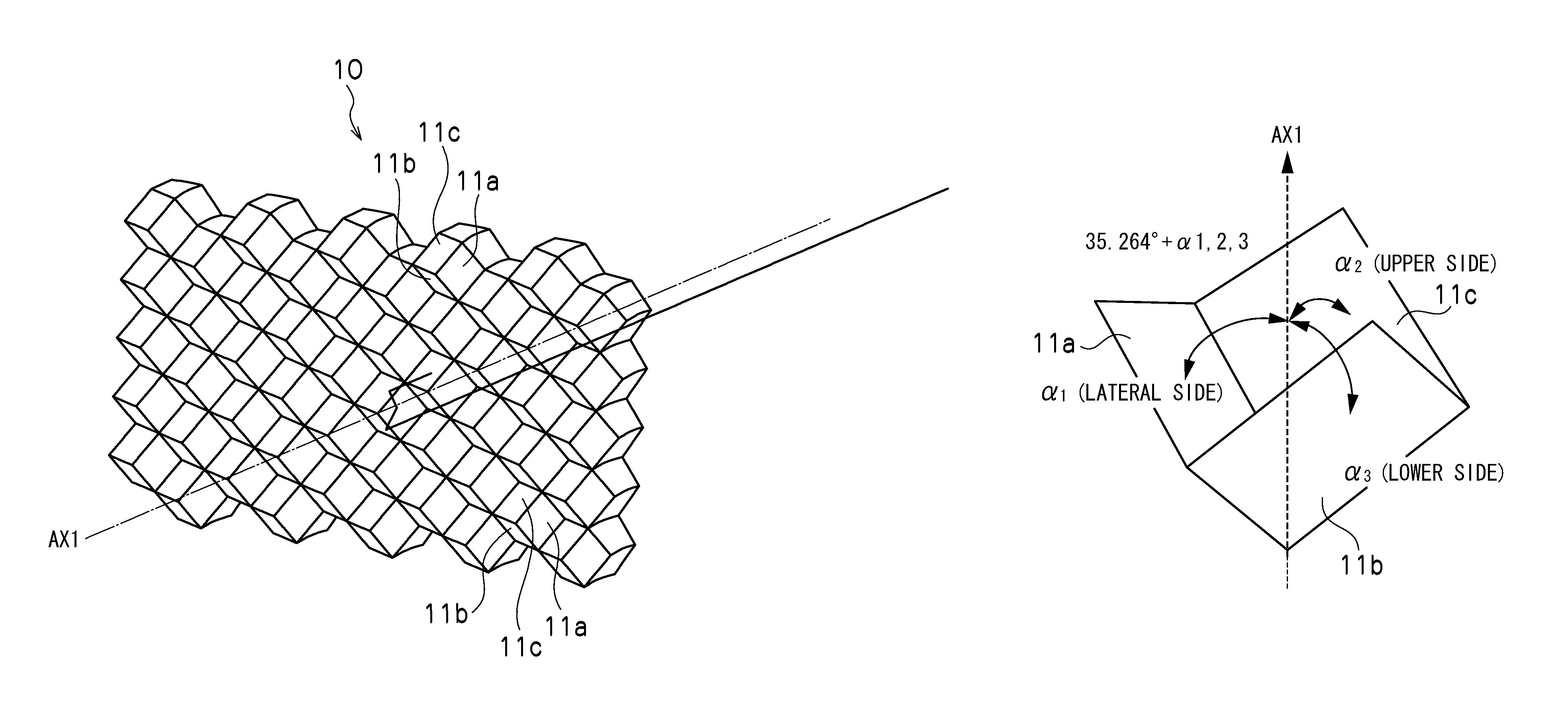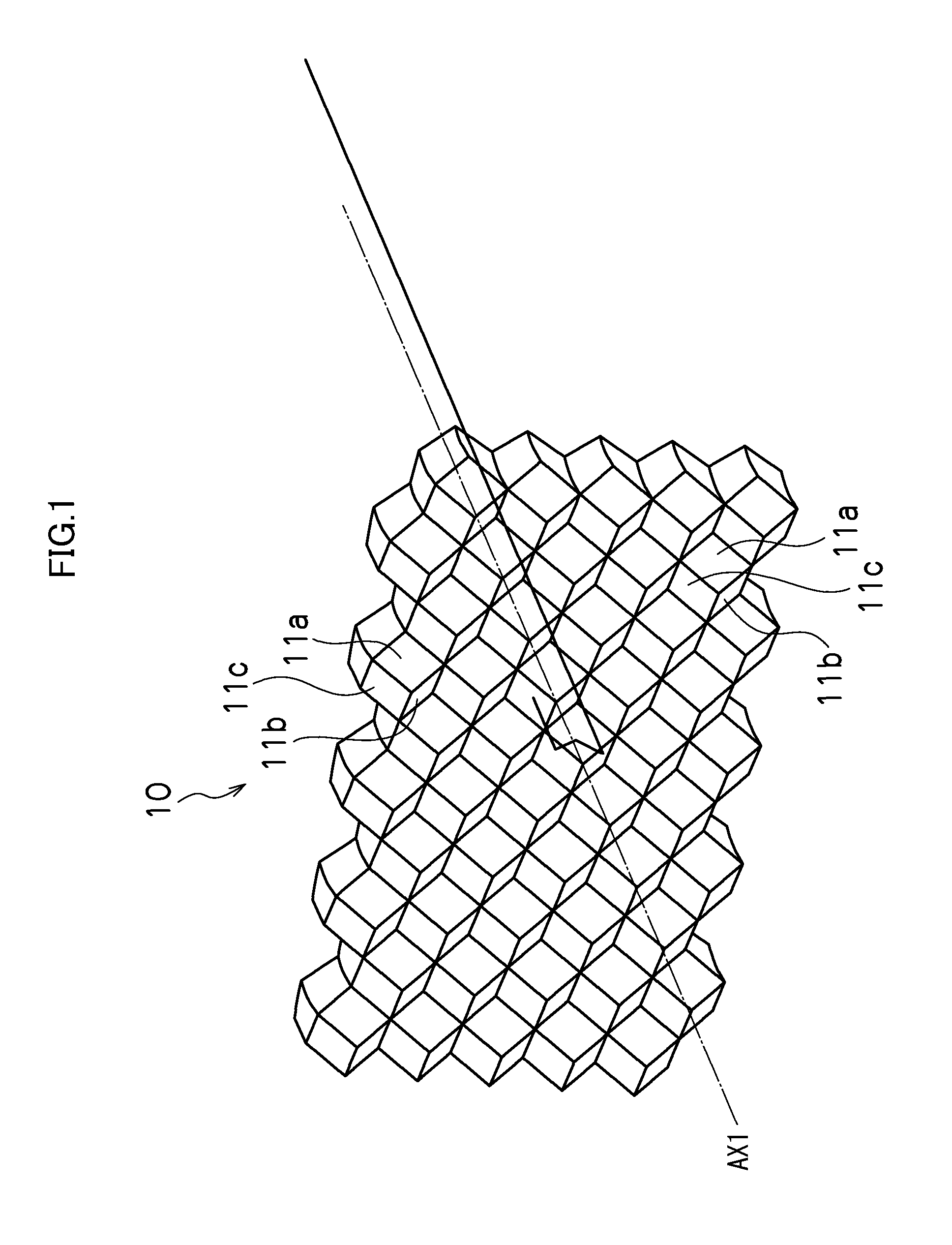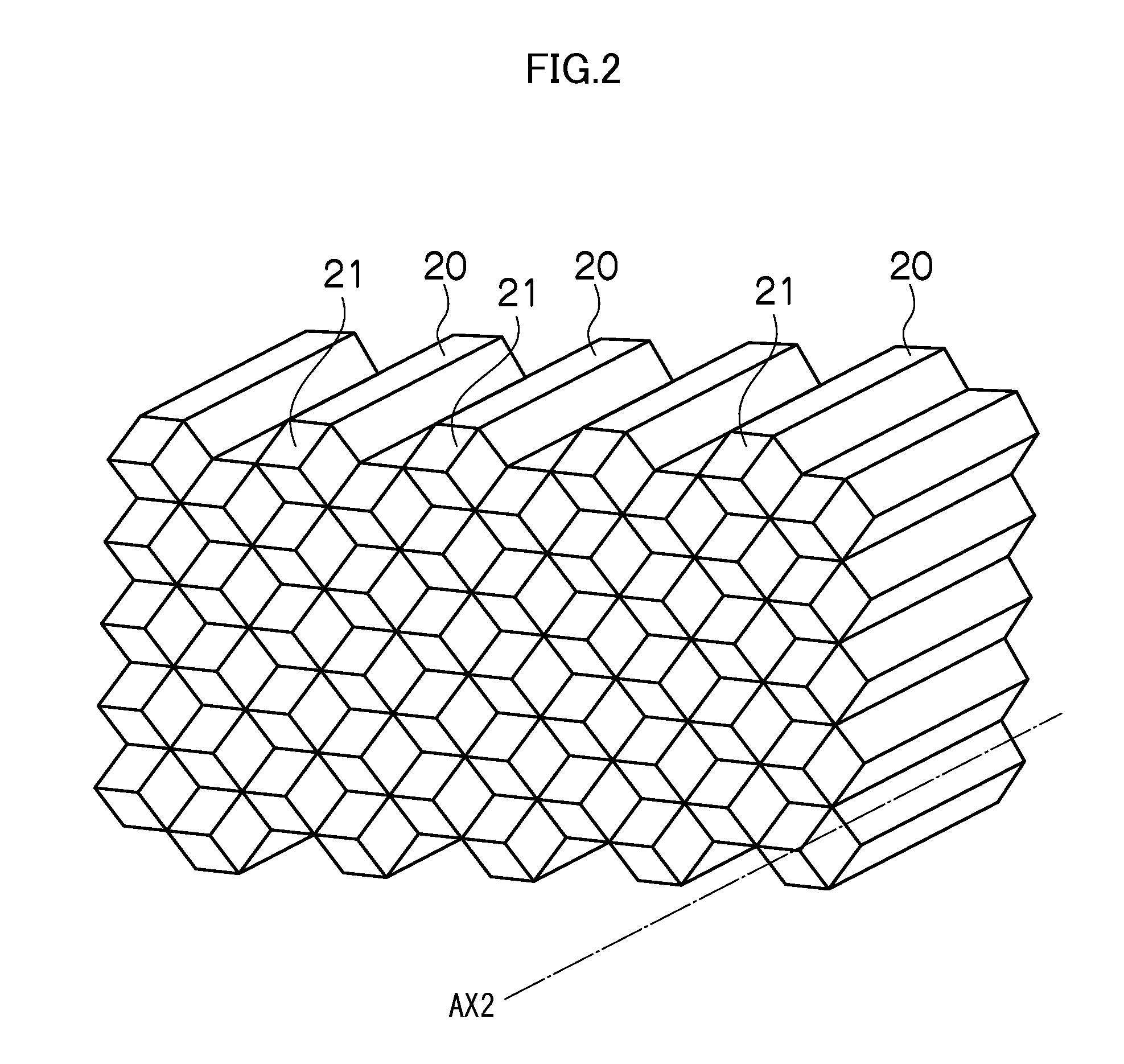Vehicle reflector and reflex pin
a technology of reflector and reflex pin, which is applied in the direction of optics, instruments, optical elements, etc., can solve the problems of increasing manufacturing error, and achieve the effects of enhancing the luminous intensity in the observation angle direction, good end result, and increasing manufacturing error
- Summary
- Abstract
- Description
- Claims
- Application Information
AI Technical Summary
Benefits of technology
Problems solved by technology
Method used
Image
Examples
Embodiment Construction
[0032]Hereinafter, an example of a vehicle reflector which is one embodiment of the presently disclosed subject matter will be described with reference to the drawings.
[0033]A vehicle reflector 10 of the present embodiment is a so-called reflex reflector which is fitted to a vehicle, such as an automobile, a two-wheeler, a truck, an SUV, etc. As illustrated in FIG. 1, the vehicle reflector 10 can include a front surface on which irradiated light from other vehicles, exterior lights, and the like located around the vehicle to which the vehicle reflector 10 is attached is incident, a back surface on an opposite side of the front surface, and a plurality of retroreflection elements 11 which are defined by a plurality of reflex pins 20 (tip end portions 21) as illustrated in FIG. 2 on the back surface. The vehicle reflector 10 can be formed by a light transmissive material such as acryl and polycarbonate such as in an ordinary reflex reflector.
[0034]The retroreflection element 11 can in...
PUM
 Login to View More
Login to View More Abstract
Description
Claims
Application Information
 Login to View More
Login to View More - R&D
- Intellectual Property
- Life Sciences
- Materials
- Tech Scout
- Unparalleled Data Quality
- Higher Quality Content
- 60% Fewer Hallucinations
Browse by: Latest US Patents, China's latest patents, Technical Efficacy Thesaurus, Application Domain, Technology Topic, Popular Technical Reports.
© 2025 PatSnap. All rights reserved.Legal|Privacy policy|Modern Slavery Act Transparency Statement|Sitemap|About US| Contact US: help@patsnap.com



